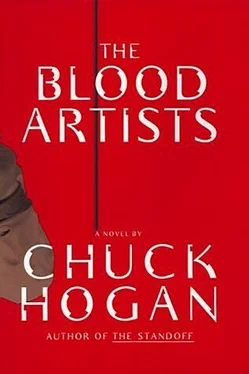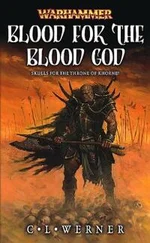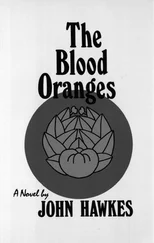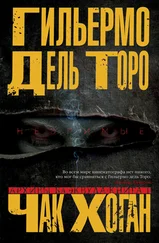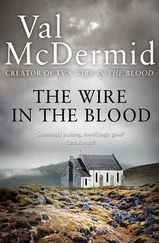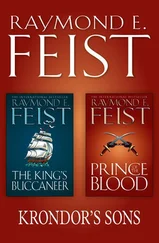She looked at her desktop screen. “There are three prescriptions.”
“How recent?”
“Two in a Florida clinic two days ago, and one in Atlanta last night.”
“Last night? The patient’s name?”
“Watson, Robert.”
It was an uninspired pseudonym. “The drugs?”
“Fentanyl, two days ago, and Baniciclovir, brand name Banix. I believe that is a relatively new varicella zoster treatment.”
Zoster was the virus that caused chicken pox. After infection it retreated into the nerve ganglia at the base of the skull and remained latent until normal aging or a depressed immune system reactivated the virus into what is commonly known as shingles. Symptoms included acute paroxysmal neuralgic pain. Banix was one of the drugs cited in the information distributed at the Plainville conference.
“For postherpetic neuralgia,” she went on. “It’s an NMDA-blocker.” NMDA receptors on cell surfaces signaled pain transmission up the spinal cord to the brain. “A painkiller, a comfort drug.”
Maryk nodded. Zero was in significant pain. He had, gone right out after the World Congress Center exposure and used Stephen’s name to prescribe himself a patient treatment for the effects of his own virus.
“No unfilled prescriptions?”
“No,” she said. “But Banix is only two years out of FDA and still strictly regulated. Ten doses maximum per person. This Watson’s got only one refill left.”
This explained Zero’s inactivity between the Waffle House infection and the World,Congress Center. Fentanyl was a powerful opiate. Zero had narcotized his human side and spent the time holed up in his car somewhere riding out the effects of the drug.
The human side of Zero was dying.
I knew exactly what was happening to me. That was perhaps the most insidious thing of all. I knew exactly what was happening and what was to come.
I had self-diagnosed shingles. Due to the morphine — Peter had tended to me while I slept — there was none of the characteristic ophthalmic pain, described by many sufferers as being like an intense toothache in the eye. There were however telltale dysesthesias, or phantom pains, such as the sensation of cold water running down my face, and I could not ignore the impulse to continually brush imagined water away from my cheeks and chin. My overloaded nerves were transmitting conflicting messages up the spinal cord to the thalamus of my brain, which was doing its best to cope with the information at hand.
Morphine. It was lovely. Morphine did not eliminate the pain, but rather compartmentalized it, so that pain remained but was a separate issue. Whenever the twinges became too sharp, I self-medicated using a thumb switch attached to my IV tubes and the dose regulator above. Then the hand shaking and neck throbbing went away. Peter was taking good care of me. I could only wonder at the degree of pain Zero was experiencing.
I was weakening. Pharyngeal ulcers were taking root in my throat, and in time I would lose the ability to swallow my saliva. My urine spilled into a catheter bag, an oily, purple drool, portending liver failure, said to be a uniquely painful event. I had accrued so much specialized knowledge in my thirty-seven years, and all of it was now draining away. Memories drifted past me on a kind of farewell tour, not flashing before my eyes but rather swirling together like so many different colors of paint, stirred into dreams. In one, the corridors and offices of Building Sixteen were filled with everyone I had ever known — family and friends, colleagues and patients, all my living and dead — passing me by without a word. I had left the door to my office wide open, but no one stopped in.
I awoke outside my oxygenated berth, seated on a high-backed wheelchair, tired and groggy. The wall screen played an underwater scene of coral reefs and schools of bright tropical fish, meant to be soothing. In designing the Tank as a place of comfort, I found that to that end I had failed. There were no reflective surfaces inside the Tank, in order that the ill would not despair at the sordid sight of their own disfigured face-, even the stainless steel fixtures were dulled. All communications in and out were monitored for signs of depression, and suicidal tendencies. I was a prisoner in a dungeon of my own design.
There was a remote keypad built into the arm of my chair, linked to the Tank computer. I instructed it to replace the deep-sea panorama with a prerecorded program from the BDC archives, my documentary, The Disease Dilemma.
There I was. Facing myself from the wall, sitting on the couch back in my office, legs crossed casually, arm extended over the seat back. I looked relaxed and supremely healthy, my face full again, my skin tight and clear. My old voice filled the Tank, dosing me with nostalgia more powerful than morphine. The sunlight was strong behind me, glowing around my hair — midday in the world of the living, just a few weeks earlier. The vista of downtown Atlanta lay beyond. Image after image swept over me until the sentimentality of the experience began to wear. I had different eyes now, and different thoughts. When the person playing the role of “Stephen Pearse,” doctor to the world, claimed that he oversaw each serious outbreak investigation personally, I stifled a laugh. The hubris of this strange man tickled me. He was begging Zero to wait for him inside bay twenty-six at Orangeburg.
I stopped the show and sank back into the cushion of the headrest, closing my eyes on the brightness of the Tank. I triggered the medication switch with a rusted thumb and it worked on my emotions, set adrift into a bright and gauzy silence. I left myself for a while, and in the role of Stephen Pearse, I visited my current self in the chair. Be brave, I told that sickly form.
I surfaced to the toning of the Tank computer. I prodded the necessary keys on my armpad to receive the incoming message. It had been posted from “Stephen Pearse” in Zurich, Switzerland. The message read:
>Won’t you join me for a chat?
Maryk watched in disbelief as the conversation scrolled down his tablet. Stephen and Zero were conversing across a virtual table in a cyber-café halfway around the world.
Audio and visual were both disabled. Each dialogue leader was listed as S. Pearse. Stephen answered
>I am here.
>So you are still alive, Doctor.
>Medical science Is gaining on you.
>Me: 1. Medical science: approx.-500. Your colleague Maryk sensed my presence, it seems. Intriguing.
>You are ill. You have contacted me for Information about my treatment.
>Has he given up yet? Now that I have humiliated him? Zurich is quite pleasant this time of year.
>Do not underestimate Peter Maryk. And you are not in Zurich.
>Soon I will be, Doctor. Soon I will be in all places.
A window opened at the top right corner of Maryk’s tablet. It was Suzy Lumen. “Hailing’s still off,” she said. “He’s plugged in somewhere.”
“You can’t trace?”
>How does it feel to be sick yourself?
“Impossible to track him back through the Internet. He’s routed the signal through five or six sites all across the world, maybe more. The only crumbs left behind would be stored in his own drive cache.”
“All right,” Maryk said. She signed off and he found his place in the scrolling conversation. Zero was speaking.
>This body is wearing out. Breaking down.
>You are changing too fast. Out of control.
>I am only improving. I will spare the sinless fauna and flora. Only man will perish, and the earth will once again turn peacefully.
>Your human cells can take only so much.
>Yours too, Doctor. Maybe you think there is still hope for you. Maybe you think salvation is still possible. A vaccine. A cure.
Читать дальше
